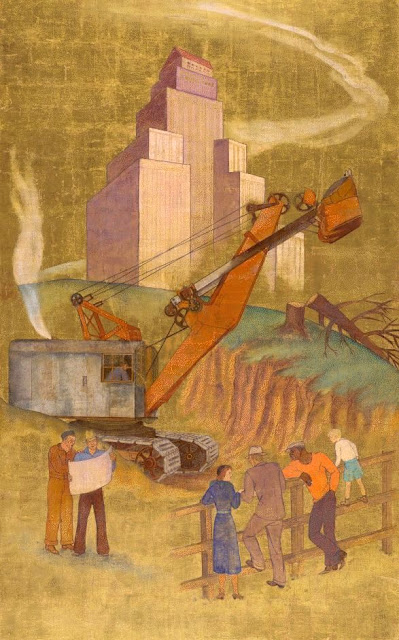Above: "Steam-Shovel," a painting by Dorr Bothwell (1902-2000), created while she was in the New Deal's Public Works of Art Project, 1934. According to her Wikipedia page, Dorr became a very successful artist and during her time in New Deal art programs, "she learned the art of screenprinting, which would become her favored graphic technique." Image courtesy of the General Services Administration, Museum Associates, and the Los Angeles County Museum of Art.
Above: WPA laborers work alongside a steam (or possibly diesel) shovel in Clifton Park (Baltimore, Maryland), ca. 1935. On some WPA projects heavy equipment was avoided in order to employ the most jobless workers as possible. But on plenty of other projects large equipment was used, for example, power shovels, steam rollers, and front-end loaders. Photo courtesy of the University of Maryland College Park Archives.
Above: On this WPA project, a power shovel is used to clear a flood-damaged creek in Westernport, Maryland, in September 1937. Did you know that the WPA rip-rapped 17.3 million square yards of shorelines, creek beds, and bridge abutments, in order to prevent erosion? (Federal Works Agency, Final Report on the WPA Program, 1935-43, 1947, p. 132). Photo courtesy of the University of Maryland College Park Archives.



No comments:
Post a Comment